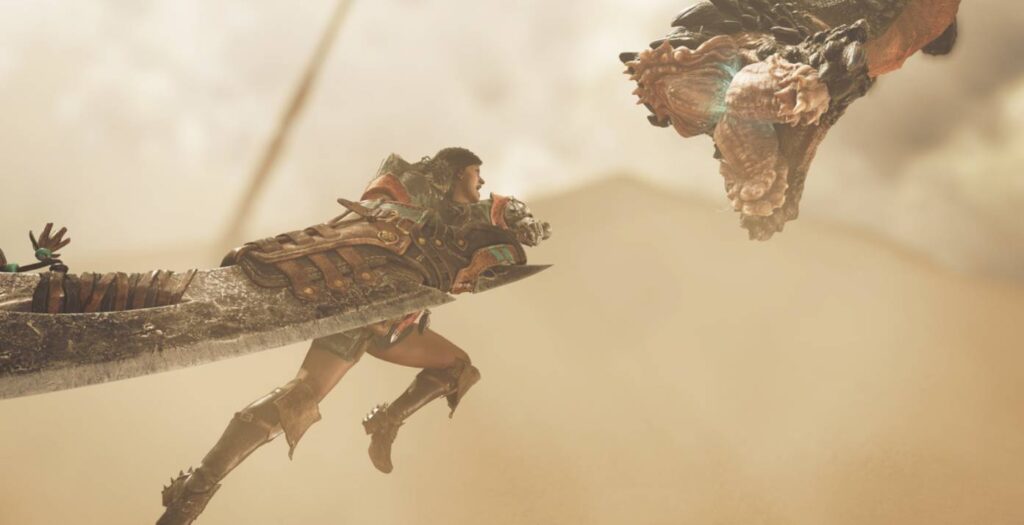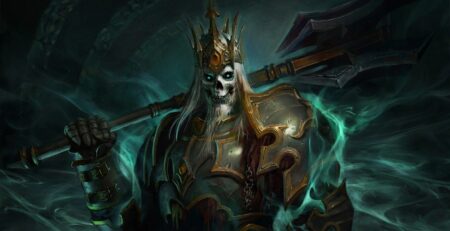Hunt monsters, get materials, get better gear. It’s a simple gameplay loop and one that has made Monster Hunter a core franchise in Capcom’s history. Beloved by many, the latest in the franchise, Monster Hunter: Wilds, is shaking things up and swinging the doors wide open for new players to step into the world of, well, monster hunting.
That said, Monster Hunter: Wilds feels like an evolution of previously explored concepts in the franchise. Combat in Monster Hunter: Wilds is representative of previous core gameloops. Stepping into the wilds of the world isn’t just something to be done here and there; it is the core of the game. Walking out into the world is seamless, with no load screens. Instead, we see the small villages give way to beautiful and vast landscapes.
You are allowed to move between both village areas and individually placed camps. The only difference is that each personally built camp can be destroyed by monsters and weather events. What could have been an easy port can turn thorny when you need to rebuild. This keeps the player engaged with their environment. However, the true reality beauty of Monster Hunter: Wilds is that the Wilds are as much a character as you or the monsters are.

Dynamic weather events and a day-night cycle all impact how you hunt. More importantly, things like lightning storms can change the environment into something more treacherous. It can strike the player and the monster alike, which you can use as an advantage depending on the monster you’re hunting. But where you can exploit the weather and even interact directly with your environment using sinkholes and collapsable rocks, the ever-changing environment is also something you have to be prepared to adapt to.
While we only saw a 30-minute demo of the Hunt loop, we saw the importance of using your environment. Whether that was crashing rocks on your prey or using other animals to harm it, the environment is a must-use element of gameplay. It is also a way to tempt your own fate. Lead a monster onto a sinking den of a burrowing sand creature? It can help you, or you can make a wrong move and fall prey yourself. Monster Hunter: Wilds may not be the first to introduce every aspect, but it is making it bigger and more immersive.
The environment also doesn’t just impact your community. It also impacts the townspeople you meet. During our demo, we saw a sandstorm rolling in, and with it, the townspeople hunkered down. Additionally, the NPCs don’t remain in one spot. Instead of heading to the same spot to deliver quests, you need to find where they are. With a live world, Monster Hunter: Wilds is pushing play and adding more to the gameplay loop itself.
That said, the developers did make it a point to explain that the game is not open world. Instead, the biomes are twice that of the previous game, Monster Hunter: World. Expansive, yes, but not endless. That said, isn’t that all you need?

Monster Hunter: Wilds is as expansive as it is immersive. It’s beautiful to look at, and although I didn’t get too hands-on, the combat keeps the pace of previous entries. Only now, the area that you have to explore and track your Hunt across is bigger, more interactive, and also not always on your side.
What is on your side is cooking. While I couldn’t find a natural way to interject this game element, the cooking animations are stunning. Mouthwatering and detailed, we watched the developers make a steak, and it looked so good that you could reach in and take a bite yourself. A simple piece of a larger puzzle, the animators who worked on the food deserve the loudest of applause.
Ultimately, Monster Hunter: Wilds has every chance of becoming a game-of-the-year contender. More importantly, it is doing so by honoring the franchise installments that came before it and also adapting to current player needs, opening the doors to the iconic Capcom franchise and ushering in new players.
Monster Hunter: Wilds is set to release in 2025.





